The following article is a transcript of a paper presented by Andy Davis, Associate Professor of Philosophy at Belmont University in Nashville, Tennessee, at the 25th national Asian Studies Development Program conference: “Wellbeing in Asian Traditions of Thought and Practice.”
The paper is partially based on an interview that Andy conducted with me in November 2018 while he was participating in my Mysore style classes and pranayama course.
– Iain Grysak
Introducing the Edge
The word ‘wellbeing’ often suggests ease or comfort, a sense of pleasantness and satisfaction. But in my talk today, I would like to examine how a pursuit of wellbeing involves the seeming opposite, discomfort and struggle, due to wellbeing requiring intense work at the limit of one’s current capability. I aim to articulate how wellbeing is linked with learning and learning with growth and growth with a certain amount of discomfort and challenge. To this end, I look at the “Mysore style” of teaching and learning from the Mysore style Ashtanga yoga tradition to see how it supports this uncomfortable work. I then adapt some lessons from the Mysore room to a discussion of challenge and risk in the university classroom.
The general idea for this paper is inspired by some comments made by my yoga teacher, Iain Grysak.[1] In an interview I conducted with him about teaching Mysore style Ashtanga yoga, he remarked that, in his view, the teacher’s primary task is to create an “energetic container” where students are “brought to their edge.”[2] In context, this was offered as a contrast to the predominant expectation that a teacher’s job is to provide physical adjustments for students.[3] Grysak takes a wider view of the learning process and the learning environment, suggesting that physical adjustment is only one of many ways that students can be “brought to their edge.”
What does it mean, to be brought to one’s edge? The ‘edge’ is a term used in yoga circles to refer to the limit of a practitioner’s physical ability. When I press up into a backbend and go up just about as far as I can without causing myself too much pain, I am working at my edge.
That seems simple enough. However, the same shape that brings me to my edge might be very easily accomplished by another student. She will need a deeper backbend, such as kapotasana, to encounter her edge. This brings us to the crux of the problem of teaching yoga: every body has a different edge. Even the same body, on different days, will work at different edges. How does a student, a relative beginner, know when he has reached his edge? What does it feel like, and what level of discomfort or pain is acceptable? How much should I push myself in trying to get my body to take the shape of an upward-facing bow?
The yoga student, with good reason, goes to a yoga teacher for help answering this question—that is, to someone with more experience and therefore expertise in working at the limit’s of the body’s ability. However, the yoga teacher cannot inhabit the student’s body. The yoga teacher has only external access to the limitations of the student’s body. To feel something from the inside, as one’s own, is meaningfully different. Even if the teacher has the skill to recognize the general nature of a limitation and also suspects what might address it, the teacher cannot do the work for the student. Being adjusted into a posture (with external pressure or support) will have important differences from pressing and supporting the body from within. This inconvenient truth underlies Grysak’s concerns about teaching styles that are heavy on adjustments, and explains why physical adjustments are an imperfect tool for finding and working at a student’s edge. Once a student develops some amount of bodily awareness, she will be better at sensing the contours of her personal edge.
If this is so, what use is a teacher at all? Here the rest of Grysak’s suggestion comes in to play. The teacher provides an “energetic container” for the student. The teacher offers a space, a room, a place, with conditions that are conducive to seriousness, attention to detail, moral support, focus, patience, calmness, and collective effort. The teacher’s main work is intentional, but it is not a doing, but rather, an allowing and enabling. The student experiences the work of her practice as produced neither by herself alone nor by the teacher alone. Or rather, the work is hers, but has been brought out and made possible by the learning environment and the relationships that constitute it.
An “energetic container” is created by a combination of elements that are numerous and subtle. These could include everything from the colors of the walls and the presence or absence of pictures of gurus or deities to the teacher’s tone of voice, gestures and attire. We will later turn to see how this can be compared with a university classroom. The notion of creating an energetic container is applicable especially with teachers that emphasize their role as listeners rather than talkers, who view their work not as depositing packets of information, but as cultivating the student’s own work at an analogous sort of edge, or rather, the edge broadly conceived.
For the edge, even in a yoga asana practice, is not just the limit of the body’s ability to take a certain shape. It is also the limit of the practitioner’s self-conception, the shape of his ego, the idea he has of who he is and what he can do. I may believe today that I can go further in my back-bending posture, I may be utterly convinced with righteous certainty that I can straighten my legs and arms and walk my hands in closer to my feet, but today I find that I cannot. I encounter a limit of discomfort and exhaustion. How do I deal with this? Do I get frustrated and force my body further? Do I immediately back off without any exploration, content to do less than I know is possible? Or will I take interest in this limit as it presents itself and investigate it, looking for space around it? The character of the yoga practice is revealed in the way we negotiate this interaction between body and self-conception. Whether it has the character of a battle, or a friendly dialogue, a yoga practice is a constant encounter between sensation and imagination, between the body and the idea of the body.
Sensation and Imagination
Negotiating the encounter between sensation and imagination is essential not only to achieving bendy postures, but to our most fundamental capacities as animals. When an animal senses something (with eyes, ears, skin etc.), the sensation is brought into relation with images of sensations that linger in the imagination, i.e. sensations from the near and distant past.[4] Take, for example, when something looks heavy. Here we are combining past tactile sensations of this object or similar objects with present visual sensations. In this way, a quality that is actually absent from sensation (heaviness) is made present to the moment of sensation not through sensation but through the work of the imagination. Imagination completes or fills out the always partial picture of sensation in countless ways. Much of the imagination’s work is unconscious and seamlessly integrated with the work of the senses.
By making present otherwise absent elements of experience, the imagination helps an animal orient itself and move from place to place, seeking out what seems best.[5] By preserving and re-presenting sensory images, the imagination gives the animal an intuitive understanding of the continuity of itself and of the world around it. Locomotion requires holding an action together in the imagination even as the body goes through the motion only one step at a time. The animal must believe, at each step, that even though it has not yet reached its goal, the goal remains ahead of it. Our wellbeing depends on how well we navigate these daily encounters between imagination and sensation, between memory and the present, between the various parts of a single motion, between one desire and another, between who we were, who we are and who we are becoming.
The imagination is sometimes misunderstood as a source of only fictitious notions or illusions that should always be replaced. Some yoga theorists, leaning on classical Indian sources, describe yoga practice as if it could leave the normal conditions of embodied human life behind, as if it released us from all imagined self-conceptions (ahaṃkāra) and all past habits (samskaras).[6] If humans are a special kind of spiritual being with an accidental animal body, then perhaps this makes sense. If, however, we grant that humans are animals through and through, then memory, imagination, desire and habit cannot be discarded or left behind. They must be trained or educated. This indicates to me that meditative absorption is likely not a sudden lightning flash where the material shell is discarded but rather the cumulative result of years of re-patterning the relationship between sensation and imagination to better reflect the way things are.
For the most part, sensation and imagination integrate well. As long as the experience of navigating our world seems to be going smoothly, our retained images have no reason to re-structure in relation to incoming sensation. Yet if we are striving for change in our lives, we must change from the root and begin to sense the world differently so that we can desire differently.[7] This seems difficult to accomplish because no amount of thinking about it will change the pleasant taste of unhealthy foods or other misleading sensations and the memories around them. If, however, we bring ourselves to an edge, a limit, even a kind of crisis of perception, we will no longer rely on retained images and we begin to acquire new sensations to become part of the imagination’s repertoire. This is one reason why it is easier to change habits in unfamiliar settings. At the edge, we draft a new relationship between sensations and the images that attend them and fill them out. It is not uncommon for hard-working yoga practitioners to suddenly alter diet, sleep, hygiene or other habits without exerting any effort or ‘willpower’ merely as a consequence of increased attention to their edge.
Finding and working at the edge of one’s current capabilities is not just for adrenaline junkies, therefore, but for all of us. Further, the ability to work at the edge is a revealing definition of wellbeing. To live a healthy life, a person must be ready to respond to the environment, ready to pursue or avoid what it is best to pursue or avoid. If we do not attend to fresh aspects of incoming sensation, if we do not accept what is unexpected or even contrary to expectation, then experience becomes routine, blunted, and unintelligent. If we only work with imagination and memories, then the idea of the body becomes a fantasy, abstract and divorced from lived experience. A person may imagine that he can still run or jump like he did ten years ago, even while struggling to get up from a desk chair. Or he may imagine that he is incapable of getting up from the chair without pain, when, with practice, his body is capable of much more. Because Mysore style Ashtanga yoga is a strenuous, six days per week practice, the attentive Ashtanga student constantly refreshes her own self-conception and lives as what she is: a growing, changing animal.
Without daily meditative movement at the edge, a person lives with an outdated idea of her own body. And without an analogous kind of attentive, consistent study and inquiry, a person works with an outdated idea of her own self. The Mysore style of yoga teaching cultivates work at the edge in a powerful yet sustainable way. By reflecting on the features that make this learning environment effective, we can offer parallel suggestions for other learning environments.
Mysore style Ashtanga
Mysore style Ashtanga yoga is the name used to describe the tradition of yoga practice transmitted by K. Patthabi Jois.[8] It is so named because it was developed in the city of Mysore (now Mysuru) in Karnataka, India. Ashtanga yoga has a few distinctive features worth noting up front. First, the Ashtanga practice is a set sequence of postures (asanas) performed in the same order each time. Second, the postures are interconnected by moving transitions or vinyasas. Third, in each posture the practitioner is to pay close attention to the movement of the breath, the placement of internal energy (bandha) and the location of the gaze (drishti). Finally, the Ashtanga practice should be practiced every day except Saturdays, full moons and new moons. Taken together, these guidelines help to ensure that Mysore style Ashtanga yoga is a demanding yet meditative asana practice.
Mysore style classes look quite different from other yoga classes. In the Mysore style, each student practices independently at his or her own pace and skill level, watched over by a teacher who has mastered the series of poses. One student may practice the Primary series, another may practice only half of the Primary series, and another may practice the Intermediate series, all in a row next to one another. The different series (Primary, Intermediate, Advanced) are fixed, and poses are given sequentially as the student achieves a certain level of competence in the previous pose. An individual practice usually lasts from one to two hours.
While students practice in the Mysore style, a teacher circles through the room watching them to see if they would benefit from brief verbal reminders about the placement of parts of the body or from hands-on physical adjustments. As noted earlier, Iain Grysak suggests that physical adjustment should be minimal. He writes that a skilled teacher will “give [students] the minimum amount of input necessary for them to understand where they should be going, and then leave it up to them to work it out for themselves.” Grysak concludes that “[t]his approach produces the strongest, most stable and most integrated result in the students, and it gives the students greater strength, confidence and power in the long run.”[9] This pedagogy takes the independent streak inherent in the Mysore style and amplifies it. Following this model, the teacher will tend to adjust only when a certain action is very difficult to engage without help (such as dropping back from standing into a backbend).
What stands out in the Mysore style of teaching is the combination of set structure and independence or freedom. Because the sequence of poses is fixed, the student can show up and practice without being told what to do by the teacher. In non-Mysore yoga classes, the sequence is invented by the instructor and is not known in advance by the student, making the student dependent upon the teacher for sequencing. In this way, the Mysore method defers a portion of authority from the teacher to the sequence itself. A student works not to follow the instructions of a teacher, nor to discover the intended insight that the teacher has in mind, but to deepen the practice of the already available sequence, sometimes with a teacher’s hands-on help, but often without it.
Bringing Out the Edge
The Mysore method offers several distinct advantages for the student who wants to find and work at her own edge.
Practicing the same sequences every day offers significant benefits. From the time of its birth, a human body begins to be shaped by the repetitive motions demanded of it. From the way standing and walking bring structure to the developing spine of a toddler, to the way hunching over a cellphone causes the shoulders and head of an adult to slouch forward, to the way smiles or frowns develop wrinkles on our faces, repeated motions give us our shapes. And repetition, having shaped the body, is likely the best way to re-shape it. Imagine how many backbends it takes to reverse the effects of twenty years (and counting) spent hunching over philosophy books.
Further, repeated motion provides a constant against which the student can measure deviations and changes. By paying attention to sensations in the practice from day to day, the student learns how to distinguish subtle differences in herself. If the practice were different every time, it would be that much more difficult to identify patterns or changes in the sensations. The repeated sequence effectively facilitates the observed experience of the body. It provides ample opportunity for the practitioner to become skilled at self-observation, a necessary prerequisite for self-teaching.
Another advantage of the Mysore method results from its concreteness, or the lack of abstract conceptualization in its instruction. In the Mysore room, verbal cues are minimal and concern gross actions. Little instruction is offered on how to achieve “perfection” in a posture, and few external standards of symmetry or geometry are applied to the poses. Such external standards impose a normative, imaginary ideal on the shape of the body. If a yoga practitioner follows the instruction of a zealous teacher, he may achieve a specific goal. But he may also lose sensitivity in his practice, over-stretch the body’s tissues, and cause damage. It is easy to push toward an imaginary ideal, based on a description from a teacher, ignoring the cues of one’s own body. No other person can feel the sensations of the practitioner’s body, and so no one can effectively specify where the right balance of tension and relaxation will be found. The more we favor someone else’s description, the harder it becomes to follow our own sensations, and the more apt we are to cause ourselves harm.[10]
Ashtanga teaching does, however, instruct the breath. The vinyasa sequence is designed to pair with inhalations and exhalations. On inhalation, the practitioner moves into one posture (usually involving spinal extension) and on exhalation she moves into the next posture (usually involving spinal flexion). In the Mysore room, the practitioner is able to move the body freely with the breath, because he is able to work at his own pace. When he arrives at a held pose, which is usually held for five breaths, he has already forged a link between the motion of the body and the motion of the breath. This means that even a pose that looks motionless on the outside will continue to move, just as the vinyasa moved, but on a deeper, more subtle level.[11] Inhalation might accompany a sensation of lengthening, expanding, or releasing, while exhalation might accompany a sensation of stabilizing, containment, or deepening. The cycle of breathing shapes the posture bit by bit, finding new space within the body. Here, it is the breath that begins to work at the practitioner’s edge, and the breath that seeks out new territory in the practice. Breathing is a deeply original self-motion, so much that it seems to make a bridge between our conscious actions and our unconscious biological processes. We both do and do not control our own breathing, in the same way that we do and do not control our own being alive. In the Ashtanga practice, breath becomes the pioneer, the explorer of the edge, while the gross physical body—and the practitioner—follows.
Breathing is also closely connected to the function of the nervous system. Close work with the breath results in better awareness of the nervous system and the states of excitation and relaxation that emerge from its work. The breath thus forges a link between the imagined body and the actual sensations of the body. The practitioner’s idea of the body is distorted by habitual over- and under-stimulation. An overexcited nervous system is likely to under-react to sensory stimulus and a lethargic nervous system is likely to overreact. If, using the breath, a practitioner can even out the stimulation of the nervous system, she can open up a new attitude toward sensation in the present moment, one that is not pulled toward anxious or depressive responses.
It is a difficult task, to learn to breathe smoothly and without forceful exertion while putting the body through strenuous athletic motions. But it is learnable. The body gains cardiovascular endurance, and the practitioner learns not to panic and gulp for air, even if a pose feels uncomfortable or seems impossible. By learning to breathe slowly and smoothly through the course of a challenging sequence, the practitioner learns to maintain a calm and focussed presence of mind. This, in turn, enables a clear evaluation of the body’s sensations, influenced neither by fear nor by ambition. In this way, attention to the breath helps one see through all the distractions, the messy emotions and social cues, so that one might know best when and where to stop.
Another advantage of the Mysore method is in the one-on-one teacher-student interactions. Typical yoga classes involve instructions given to all students, at the same time and in the same way, despite the fact that every student has a different body. In the Mysore room, every teacher-student interaction is one-on-one. This means they may take place as a concrete communication referring to a given body at a present moment, with immediate relevance and applicability. There is virtually no theory in it. The adjustment or instruction from the teacher serves as a reminder rather than a transmission of knowledge. When a teacher touches the body lightly or issues a simple correction, the student is given the opportunity to realize that his attention has lapsed and he has forgotten to hold the body together in the posture. Diffuse attention leads to a scattered way of holding the body. This is often a clear reminder that the idea of the body and the sensation of the body have diverged. This is also a sign that we hold ourselves in a careless way outside of the practice as well. Repeatedly addressing these attention lapses day by day gradually reduces such lapses and increases focus.
When focus is present, sensation and imagination work together at the crest of arising experience. The focused practitioner holds each moment of sensation in relation not to an abstract standard (imagination gone lifeless and dull), but to the relevant whole of a single arc of activity or motion (imagination alive and in-the-moment). Focus thus tends to arise most clearly at the edge, at the limit of capability, because it is here that each arising sensation bears the most significance. It is here that each decision has meaningful consequences the practitioner may observe immediately within or soon after the practice. At the edge, a practitioner can follow arising sensation toward evolving self-understanding.
Over time, a practitioner might notice attention constantly fleeing from certain areas or actions of the body. Through repeated actions and interventions, the practitioner begins to track his dark zones and blind spots, all the places in himself that he habitually avoids. In the practice, the practitioner may discover a map of his habits, and in these habits, a map of his choices and values. These are not the values we articulate to ourselves and to others, the stories we tell about ourselves, but the values we enact on a daily basis. I may tell myself that I am not stressed out, that I am kind and compassionate toward myself and others, or that I do not harbor deep and unspoken angers and fears; but my body tells a different story.
Discomfort and Wellbeing
Daily Mysore style Ashtanga yoga is an intense practice and makes consistent, systemic demands on the body. As the body begins to re-structure to better support itself in the practice, the practitioner experiences regular soreness, pain and occasional strains that belong to this process and can be considered good signs rather than warnings or reasons to abandon the practice. These discomforts often indicate that the student is in fact working at the edge of current limitations and cultivating a new relationship of the body to itself.
It often seems taken for granted that the point of practicing yoga is to feel good. Yoga is popularly presented as an exercise that is balancing, centering and calming. It may be more accurate to say that the point of a yoga asana practice is not to feel good, but to feel more deeply—not to feel better, but to feel better. If there is pain, anger, tension, doubt, pride, shame, strength, stability, softness, balance, anxiety, depression or uneasiness in the practitioner, asana practice is a powerful way to become sensitive to these deep stirrings of body and soul. This is necessarily a difficult path. Nobody finds it easy. Often, what the yoga practice reveals will be encountered with frustration, despair, fear, or just plain confusion. The practice is, after all, a daily encounter with one’s limits, a daily attempt to make headway into what seems—what feels—impossible. If it becomes a transformative practice, this means that it involves losing one’s past self. Dying to oneself, even if it prefaces rebirth, is never pleasant, never easy. Nevertheless, it is better to know oneself than to remain blind to psycho-physical habits.
It is hard to find as reliable a daily measure of embodied experience as an Ashtanga yoga practice, which is both consistent and consistently diverse in its demands. Without the clarifying light of such a practice, we are likely to feel our body-souls as mediated through shifting moods and ideas or images that have no embodied reality. Human beings act in strange ways. We will claim that everything is okay, until one day we erupt, like a volcano, from a deep swell of anger. Or we will claim that we love a partner, until one day we realize that we haven’t shared our true selves with them in decades. We will do things because they are socially acceptable, without acknowledging how they trouble us to the core. We will choose what is familiar over what could lead to our own happiness. Without some kind of practice that teaches the practitioner to navigate the boundaries of potential, and to do so as a self-directed, self-sensing activity, we become helpless in the face of our unknown selves. We remain unprepared for our feelings and unequipped to respond well to them.
With such a daily practice, however, one conducts a daily survey of what it is like to be living in one’s body on that particular day. One has confronted negative feelings about oneself and areas of stiffness and tension. One has taken the time and effort to practice observing oneself, being sensitive to one’s limits, and persevering in the face of discomfort. This increased awareness can be carried from the practice into the rest of the day. It is difficult to assess the value of yoga practice for personal change and wellbeing because so much depends on what the student does with what he discovers in himself during practice. But the more self-directed and self-applied the practice is, the more likely it is to instill the habit of self-reflection.
It is never a solipsistic practice, however. In the Mysore room, one’s practice is both self-directed, and also observed by a teacher, making it not only an incubator for insights, but also a reminder to apply those insights diligently. When teachers simply talk, students miss out on discovering insights for themselves. They become disengaged, bored, or dutiful in an instrumental way. When students work without teachers at all, they often lack the motivation or capacity for discipline and consistency. The stakes may not feel high enough, the situation does not seem pressing, one feels sore and stiff, and one’s trust in the practice wavers. One is apt to postpone one’s work to the next day, or the next.
This brings us to the problem of pain. Pains, from minor discomforts, to aching limbs, to chronic strains, to tissue tears, present an obstacle and a puzzle to the most perceptive of students. Animals naturally withdraw from pain. This is a healthy response that generally leads to wellbeing, as it assists in survival. However, just as the avoidance of pain can be detrimental in the pursuit of self-knowledge, it can be detrimental in the pursuit of wellbeing. Someone with experience is sometimes needed to remind us that staying with a pain can be good. Pain is not always a signal of harm, even if we are apt to interpret it as such. While on the one hand I must let my body be my teacher, on the other hand, bodies have their own prejudices. A good teacher, who has endured the pains and discomforts herself, helps to mediate the body’s work when bodily distress prevents us from recognizing things as they are.
Learning at the Edge
From this look at Mysore style teaching and practice, a few general conclusions arise. A learning environment should help students find their own personal edge and not an abstract target designated in advance by the teacher. To support this, the learning environment should cultivate consistency, challenge, introspection and independence.
I would argue that these qualities can be applied to liberal arts courses in modern universities to help bring students to the edge of their current capabilities. A class discussion or seminar can potentially offer a flexible learning environment where students can engage fruitfully with varying levels of competence. Unlike an interactive lecture, which rewards only those students who approach the content in a way similar to the professor, a seminar discussion can make space for divergent approaches. In a good discussion, each participant can test the differing limits of their own competence as a reader, thinker and speaker at the same time.
As in the Mysore room, a consistent learning environment should allow students to prepare properly. Continual change at the whim of the teacher invites students to stop preparing for class because it is unclear what preparation is worthwhile. Inconsistency or unpredictability causes students to feel at the mercy of the teacher, and as though they have no personal grasp on the trajectory of their learning. At the same time, the teacher should be prepared to provide diverse challenges to students. If the teacher seems easy to impress or content with a rehearsal of what is obvious—or worse, a rehearsal of what the teacher wants to hear—students are not invited to try for more. To promote introspection, a seminar group should acclimate itself to silence. If the teacher seems anxious or creates the expectation that silences should be filled, there is no space to think in the classroom. The class becomes a place to rehearse ideas rather than a place to discover or test them. Finally, independence can arise in a classroom when it is clear that the teacher does not have an agenda that must be followed. When students begin to see that their decisions and contributions have consequences on the quality of the conversation each day, personal responsibility and independence are cultivated.
While this is all somewhat formulaic, it may help us work past some prevalent assumptions. Yoga pedagogy and liberal arts pedagogy are both dominated by instructional models that treat education as a transmission of information from teacher to student rather than as a catalyst for genuine self-exploration in pursuit of holistic wellbeing. When a student learns, she does not learn the subject matter in abstraction, but in concrete relation to what she already knows and believes. This means that the student is in a better position to know how to integrate the subject into her own particular body and soul than the teacher. The teacher may be more expert on this technique or that book, but not at the technique in relation to my body or the book in relation to my soul.
Working at the edge demands, above all, that we—as teachers and students—be willing to endure confusion. As we push to the limits of the familiar, we are bound to become disoriented. Thus education at the edge requires trust. A student must be willing to go backwards (or what seems to be backwards), believing the path will eventually lead forwards again. The teacher must also be willing to go backwards, to accompany the student as she works through her edge, and to show by example that disorientation does not warrant despair. In Ashtanga yoga pedagogy, nothing encapsulates this need for trust better than when a teacher stops a student at a pose the student himself believes he has mastered. With time, the student may come to see the value in being set back, when it helps him re-discover his edge in a place he had stopped looking for it. Likewise, seminars abound with conversational tangents that seem to lead nowhere. But then, if pursued with a collective trust and sensitivity to the unknown, such tangents can turn up insights in places we would never have thought to look.
Both approaches are rooted in the belief that real insight transcends a person’s ability to encapsulate and represent things to himself in advance. Seeking wellbeing at the edge is a matter of remaining open, loosening the ego’s grasp on the self and making space for an unexpected self, an emergent self. If we seek wellbeing in this way, the self is no longer a detached image or a static representation, no longer a fantasy we have of who we are. The self becomes the work of the self.[12] In this work, there is no distinction between the body and its life, no distinction between the self and its wellbeing.
Note: I would like to thank Iain Grysak for his essays and for his energetic container, “Spacious Yoga” in Ubud, Bali. I would also like to thank Elizabeth Hejtmancik for her helpful suggestions and extensive revisions to this essay.
Andy Davis
Associate Professor of Philosophy
Belmont University
[1] Iain Grysak is a KPJAYI Level II authorized teacher of Mysore style Ashtanga yoga currently based in Ubud, Bali. The formation of this talk was guided by two interviews with him (conducted in November 2018) and also by his written essays, found at www.spaciousyoga.com/blog.
[2] From an interview recorded on November 9th, 2018.
[3] An adjustment typically involves bringing the student’s body more deeply into a particular posture (pressing the back into a deeper forward bend, helping the hands bind in a seated twist, etc.).
[4] ‘Image’ here is a generic term for absent sensory elements made present and could include sound images, visual images, tactile images, etc.
[5] It is for this reason that Aristotle reasons that all animals with the capacity for locomotion must have an imagination/memory/desire, while plants and stationary animals (e.g. corals) may have ‘pure’ sensation without imagination, memory and desire. See Aristotle, On the Soul Book III, Chapters 9-11.
[6] Bhagavad Gita 3.27 and Yoga Sutras 2.15-17 are example texts that might be used to support this problematic view (but need not be interpreted in this way).
[7] Aristotle implies something like this in Nicomachean Ethics Book VII, Chapter 3 (1147a25-1147b5).
[8] The published text outlining Jois’ method is his Yoga Mala. The method seems to be based on the method of Jois’ own teacher, T. Krishnamacharya, as he taught it to Jois in the 1930’s and 40’s (see Singleton, Yoga Body, p. 176). Krishnamacharya went on to teach in different ways (see Desikachar, The Heart of Yoga p. 28-29).
[9] From the short essay “You Stop There” published January 22nd, 2015 [https://spaciousyoga.com/you-stop-there-lessons-from-sharath-jois/]
[10] For more on this see Iain Grysak’s “Teaching vs. Preaching: Embodiment as the Gateway to Authentic Understanding and Integration” published on December 5th, 2018 [https://spaciousyoga.com/teaching-vs-preaching-embodiment/]
[11] This insight is based on comments made by Iain Grysak in a Pranayama Workshop held in November 2018.
[12] The insight that to-be-something is not a passive inheritance but an active doing can be explored in Aristotle’s Physics and Metaphysics, especially Metaphysics Theta (i.e. Book IX). Two recent, helpful interpretations of these arguments are Aryeh Kosman’s The Activity of Being and Jonathan Beere’s Doing and Being.
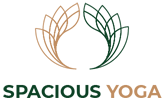
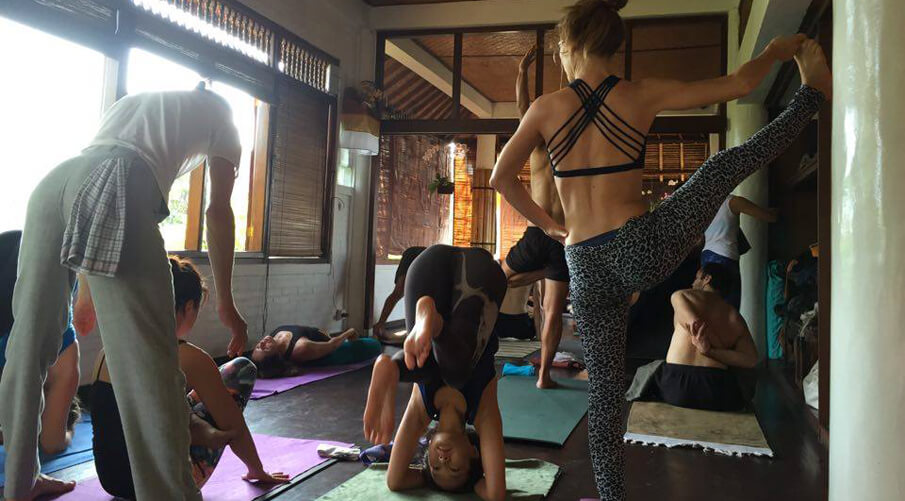

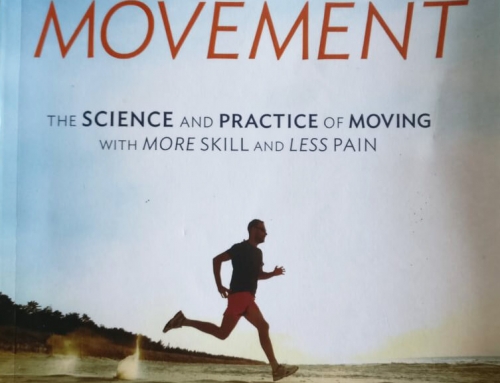

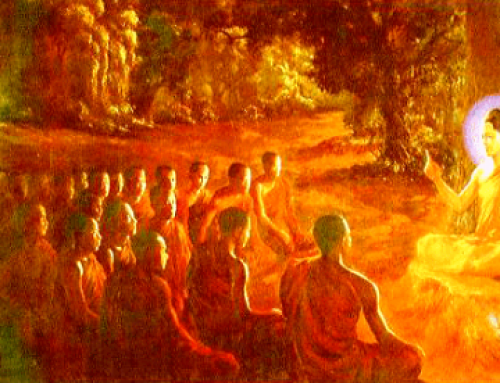
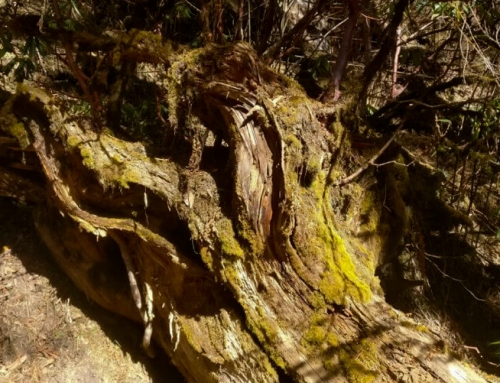
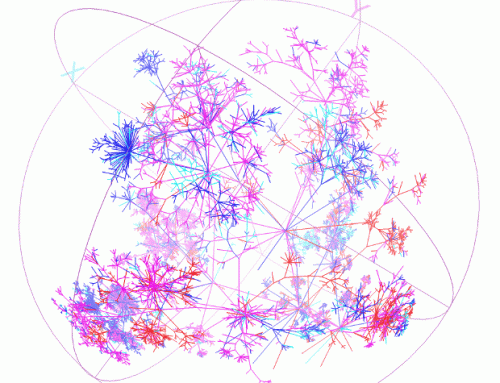
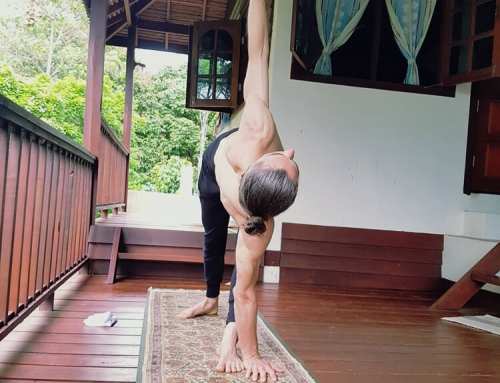
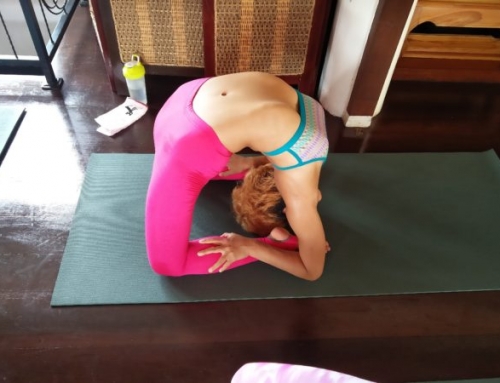
Iains! Finally found the time to read this. I quite like it, particularly the “sensation and imagination” section.